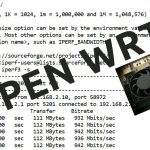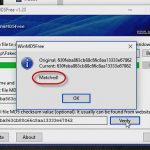Video – How to Access the Online Lab Environment
Video – How to Access the Online Lab Environment
Video Transcript:
To launch the lab environment, I go to the module I’m working on. In this case, I’ll stick with module one, features and benefits. And I say, “OK, I want to do this lab.” I click the button that says “launch lab.” This will open up another tab in my browser where I’ll be required to log in.
Now, this login and password is a separate login and password from what you set up at the interface technical training video site. But you should be given the information you need in an email to access the lab environment.
I’ll log in here. I’m not going to let you see my login and password. And after I successfully log in, I’m taken to this page. I want to click on the link that says “SharePoint Designer 2013 for American Express,” and then, I want to click the launch button.
When I click the launch button, I’m going to be presented with some options. I do not want to click install on the ActiveX, because I’m not allowed to install ActiveX in the current environment, from within American Express.
I’m going to want to X out of that. And then, it’s going to give me the option to use the HTML5 control. I’m going to click that link that says use HTML5 control. But I’m not quite done yet, because there’s another option I actually need to select from within here.
I need to go up here on the right side in this little management environment screen and click options. And then, on the second drop down menu, which is currently on HTML5, I need to click that and I need to choose Silverlight.
This is the version of the lab environment that’s currently supported from within American Express. It’s very important that I pick that selection.
Now, I’m presented with a virtual machine, and that’s what this is. I don’t want to hit Control‑Alt‑Delete. I want to use the commands button up here at the top, and I want to send a Control‑Alt‑Delete. I’ll click that and that will send a Control‑Alt‑Delete to the Hyper‑V machine.
Also, the password, I don’t even need to remember the password. I can click “commands” and I can click “paste” and I can click “paste password.” And this will paste in the password that we’ve preconfigured for this machine, and then, I can click the blue arrow and get into my environment. Once I’m in my environment, everything is there ready to go.
Every lab will start the same way. You’ll come into this environment and you’ll click Internet Explorer, which is in the task‑bar and the home page is the home page to start your first lab.
I want to point out just a couple things that are in the favorites bar, in case you’re ever moving around and you’re like wait, where am I? How do I get back to where I started?
In the favorites bar, you have three shortcuts. Labs all links, labs complete and labs home. Labs all links will take you to this page, where you have a links list, in SharePoint, that has two main columns that we’re concerned with. On the left is the lab number, that’s a little bit obvious.
But on the right, we have two columns, start and complete. If you’re ever confused as to where to go, you can click on the start. I’m on lab one. If I’m not sure where to start, I can click this link from start, and it takes me to the home page of where I start the lab.
If I want to see what the lab looks like or what it’s going to look like when I’m done, I can click complete. And that’s the same for every lab. You can see what it’s supposed to look like when you’re done, and you can always get back to where you’re supposed to start that particular lab.
To start SharePoint Designer, and there will be instructions, don’t worry, when you need to do this, inside of your lab instruction book. But I can always come down here to the taskbar, click the SharePoint Designer 2013 icon and that will fire up SharePoint Designer 2013. There I can click on the link if I previously have gone to a site or it’s listed here like in the labs, the home page of the labs environment. And I can go ahead and open and connect to that site.
Alternately, I can follow the instructions in the lab manual, because the lab manual shows us several different ways to connect from SharePoint Designer 2013 to sites. We want to be able to know how to do it from all of those.
When I’m done, this is really cool, I can come over here and I can say exit. And when I exit, I can either end the lab or I can click save and close the lab. If I click end the lab, it’s going to end the lab.
But if I click “save” and close the lab, it says, “It will be saved for seven days,” but we’re, I want to let you know, it will only be saved in that particular state for two days. That’s important.
If you can’t complete the lab within two days, it’s OK, you can start over again. But keep in mind you can save it for two days in case you need to maybe go have lunch, do something else and come back. Or, maybe continue it later that evening or maybe at some time the next day. But after two days, it goes back to its original state.
If I were to click exit and I were to click end lab, I have two options. Close the lab and mark it as complete or cancel my lab, in which case it won’t be marked as complete. It’s up to you. I’m going to click cancel my lab.
That’s it. The whole lab environment, all of the documentation, everything is there. A whole environment for you to be able to prepare for your American Express SharePoint Designer 2013 exam.
You May Also Like
A Simple Introduction to Cisco CML2
0 3901 0Mark Jacob, Cisco Instructor, presents an introduction to Cisco Modeling Labs 2.0 or CML2.0, an upgrade to Cisco’s VIRL Personal Edition. Mark demonstrates Terminal Emulator access to console, as well as console access from within the CML2.0 product. Hello, I’m Mark Jacob, a Cisco Instructor and Network Instructor at Interface Technical Training. I’ve been using … Continue reading A Simple Introduction to Cisco CML2
Creating Dynamic DNS in Network Environments
0 643 1This content is from our CompTIA Network + Video Certification Training Course. Start training today! In this video, CompTIA Network + instructor Rick Trader teaches how to create Dynamic DNS zones in Network Environments. Video Transcription: Now that we’ve installed DNS, we’ve created our DNS zones, the next step is now, how do we produce those … Continue reading Creating Dynamic DNS in Network Environments
Cable Testers and How to Use them in Network Environments
0 731 1This content is from our CompTIA Network + Video Certification Training Course. Start training today! In this video, CompTIA Network + instructor Rick Trader demonstrates how to use cable testers in network environments. Let’s look at some tools that we can use to test our different cables in our environment. Cable Testers Properly Wired Connectivity … Continue reading Cable Testers and How to Use them in Network Environments



